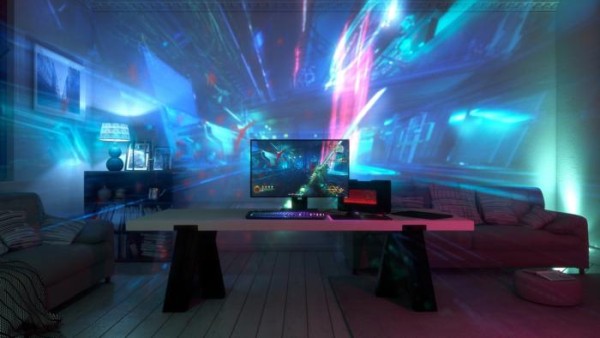The Consumer Electronic Show may be all about the home appliances this year, but there were still plenty of TV and other screens on displays.
The basic display technology hasn’t changed much since last year’s show, with manufacturers yet to start telling us that, actually, 4K, OLED and High Dynamic Range are all unwatchable rubbish akin to covering a screen in Vaseline, so we need to buy the next generation instead.
Visitors still got to see some fresh ideas however. Sony had a set that ditched speakers altogether and instead creates sound by having the (even thinner) screen vibrate. It’s certainly an original take, though it seems a noisy convention room was a tough place to assess it in. It’s also likely that people willing to splash the cash on the latest screen are probably going to be using a sound bar or external speaker system anyway.
LG’s latest set (above) takes thinness to the ultimate extreme thanks to a design that means the main screen is literally just the display panel, with the rest of the electronics housed in a separate box that includes a soundbar. It’s connected by a ribbon cable, but unsurprisingly publicity shots such as the one above use the option of building the cable into the wall.
The display is a mere 2.57 millimeters (yes, millimetres) thick and attaches to a wall with a hook at the top and magnets at the bottom (which don’t screw up an OLED) picture, so it looks as close to being built in the wall as possible.
Not every advance is quite as useful however. LG also showed off another OLED which is somewhere between translucent and transparent. Assuming nobody’s actually going to use it as a window, the chances are the novelty of sticking your hand behind it will wear off soon.
Gamers aren’t left out in the display stakes. Razer showed off Project Ariana, which is still in development, and is a projector that uses the entire room as a second screen to work with the main TV screen or monitor. It uses a pair of 3D cameras to figure out what adjustments are necessary to cope with furniture and other objects between the player and the back wall. Exactly what it shows will be up to games players, with suggestions including extending the main display, showing a game map, or simply creating atmospheric lighting.



